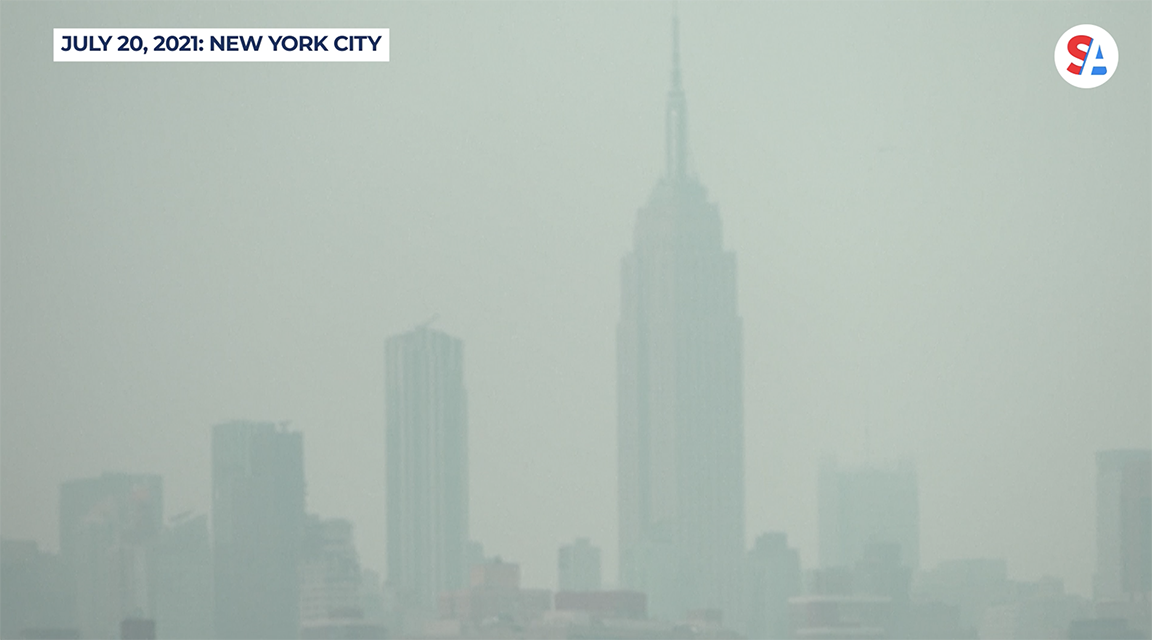
David Lawrence, National Weather Service – Meteorologist/Emergency Response Specialist:
“So you’re seeing smoke that is basically coming from a bunch of wildfires across much of the western United States, that smoke is being transported by the winds aloft in the atmosphere to places it normally doesn’t end up, at least in most years, making it all the way to the east coast of the US. We’re seeing lots of fires producing a tremendous amount of smoke, and then therefore, by the time that smoke gets to the eastern portion of the country where it’s usually thinned out, there’s just so much smoke in the atmosphere from all these fires that it’s still pretty thick. So it becomes quite noticeable. Again, especially over the last two years when we’ve seen this phenomenon of just a tremendous amount of Western wildfires occurring. In most cases, the air quality does take a pretty big hit, but especially that is true in the vicinity of those wildfires. By the time that smoke gets further east, occasionally you’ll be able to smell it as maybe it gets a little bit closer to the ground. But in most cases, the smoke is aloft. And so people see it with things like pretty sunsets, whether it’s red or orange. You’re seeing those extra colors in the sunset or sunrise. So most of that smoke, by the time, again, it’s in the northeast is aloft. Not so much at the ground.”










